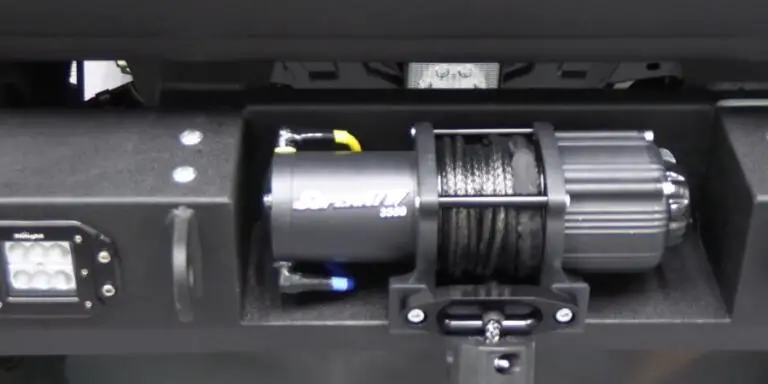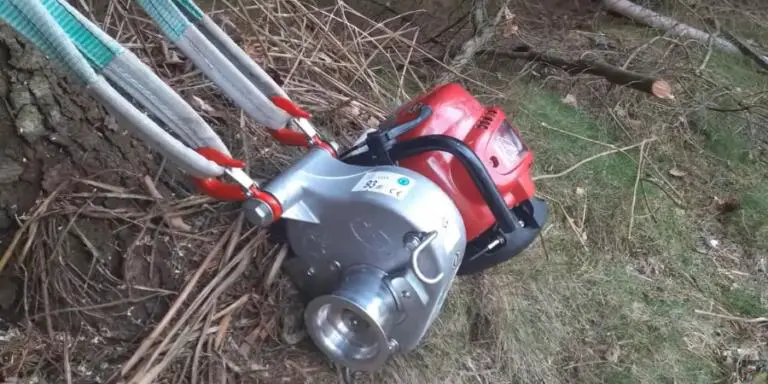How to use a Come-along Winch?
A come-along winch is a manual tool to apply a pulling force to an object.
However, it is frequently used to pull or move heavy things that are too big or awkward to carry by hand.
By turning the handle of the winch, you can apply a constant force due to its ratchet mechanism, which helps in pulling the object easily.
Before using a come-along winch, ensure the object you are about to move is stable.
Apply tension to the object by hooking the come-along winch’s hook onto it and cranking the handle.
Continue turning the handle until the object is in the desired location.
Learning how to use a come-along winch can seem tough, but with the aid of this manual, we will show the right procedure on how to use the winch without having any prior experience.
Step-By-Step Guidelines to Use a Come-Along Winch
The come-along winch has a ratchet mechanism that lets you move the object a short distance before locking it in place to keep the object firm as you pull on the rope to move the remaining space.
Let’s dive into the procedures.
Step 1: Decide on the Best Come-Along Winch for the Job
The weight of the load you will be lifting, the distance you will be covering, and the surface you will be operating on are crucial factors to consider when selecting a come-along winch.
Electric, manual, and hydraulic come-along winches are the three main varieties.
Electric come-along winches are perfect for lifting light loads over short distances because they are battery-powered.
The best manual come-along winches for heavier loads that need to be transported over longer distances are powered by human muscle.
Hydraulic come-along winches are ideal for lifting heavy loads over long distances because a hydraulic pump propels them.
Step 2: Properly Inspect the Winch
The key to safe operation is inspecting for damage and proper operation.
You should check the brakes, the winch motor, the fairlead, the cable, and the fairlead for wear, among other things.
Ensure the winch is adequately lubricated and the electrical connections are secure. The winch shouldn’t be used if there is any damage.
Step 3: Fasten the Winch to the Load
It is necessary to secure the winch to the load in a way that won’t harm the winch or the load.
There are various approaches to doing this. The first method involves a strap. The load and the winch are both wrapped in the belt.
Because it evenly distributes the weight, this method of loading the winch is the safest.
Utilizing a chain is another option for securing the load. The load and the winch are both wrapped in the chain. Due to the chain’s potential to harm the load, this is less secure than using a strap.
The use of a rope is the final method of fastening the load. The rope encircles the load and winch.
Step 4: Put Pressure on the Winch Line
Applying tension will prevent the winch line from slipping off the winch drum, which could harm both the winch and the cable.
You must ensure that the line is securely fastened to the winch drum before applying tension.
Using the winch handle, you can apply pressure to the line once it is attached.
It’s crucial to tighten the line up enough to prevent it from slipping off the drum. The cable and the winch can be harmed by excessive tension.
Step 5: Tighten the Line by Turning the Winch Handle
Make sure the line is tight before turning the winch handle.
To accomplish this, pull on the line and observe to see if it moves. Once the line is closed, you can turn the winch handle to make it even tighter. Avoid cranking it too firmly to avoid damaging the winch.
Step 6: Exert Pressure on the Load
It would be best if you first determined the required pressure level. Use a tool to help you apply pressure evenly after that. And finally, be careful when exerting pressure on the load.
Step 7: Monitor the Load and Winch Line
The winch, the load, or both may sustain damage if the cable is too tight. This must be prevented by continuously adjusting the winch’s speed to maintain a safe tension on the line.
Additionally, it’s critical to monitor the line’s condition and look for any signs of damage or wear. It is crucial to act quickly to repair the line if any damage is discovered.
Step 8: Keep Onlookers Away From the Winch Line
It’s crucial to keep onlookers away from the winch line. This is because the line might suddenly snap back and hurt someone. Use a winch line that is the appropriate length for the task in order to protect onlookers.
Using a winch that is in good condition is also crucial. The line may snap back if the winch is faulty.
Step 9: Cut Off the Winch Line from the Load
There are several ways to cut the winch line off from the load.
First, disconnect the cable from the load while the winch is still running. You can do this by releasing the line from the winch or by unhooking it from the load.
Stopping the winch and separating the line from the load is the second method of disconnecting it.
Detaching the load from the winch is the third method for cutting the cord.
As we stated earlier, simply release the line from the winch or unhook it from the load. You have to be careful with these steps if possible put on your protective wear to avoid injuries.
Step 10: Store the Winch Properly
When storing a winch, there are a few considerations to make. Make sure the winch is lubricated, cleaned, and securely fastened.
Keeping your winch properly helps preserve the tool for a very long time.
Final Thoughts
A come-along winch can be very helpful in a variety of situations. If you’re considering purchasing one, ensure you get the right tool to suit the intended task.
Getting a come-along winch is worth the expense, every off-roader can agree.
Hopefully, you’ve learned how to use a come-along winch. Be careful while operating one and follow these instructions strictly.


